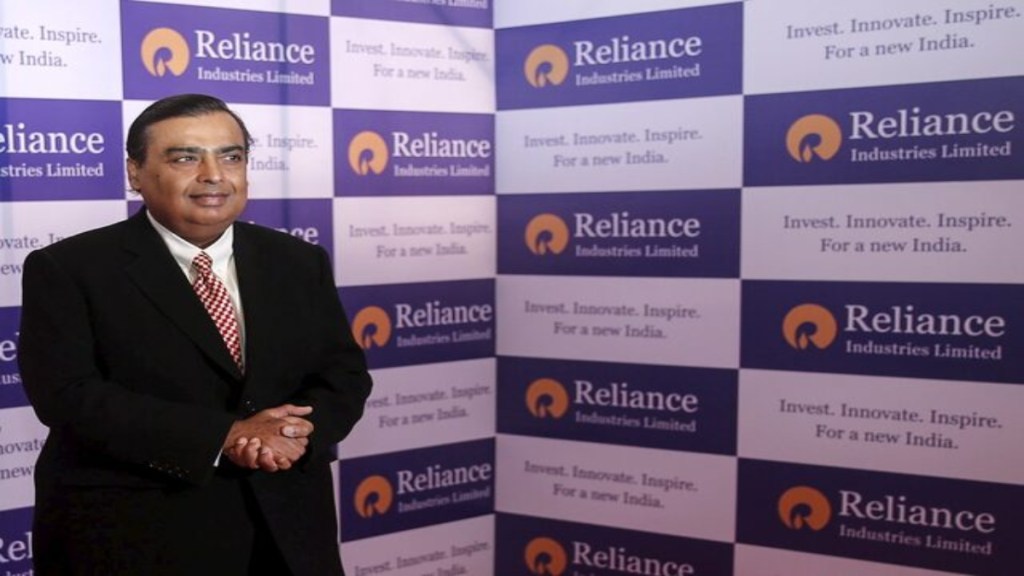Mukesh Ambani led Reliance Industries has got a thumbs up from key brokerages. While Jefferies maintains the Buy rating, Kotak has also upgraded the stock to buy. The oil to retail behemoth led by Mukesh Ambani has been underperforming Nifty 50 for quite some time now due to a slowdown in retail and subdued earnings in the oil-to-chemical business. However both the brokerages believe that the worst might be over for Reliance.
Jefferies on RIL: Worst is done, time for growth
Jefferies has a Buy rating with a target price of Rs 1,660. The brokerage house sees upside of 43% in a base care scenario. This base case price target implies 8x EV/EBITDA growth for O2C Business, 13x for India mobile and 28x for core offline retail businesses. Jefferies also has an upside scenario,where they expect the share price to jump 59% from current levels to a target of Rs 1,850 on the back of better than expected recovery in GRMs/petchem margins, faster consolidation in telecom leads to tariff upside in Jio, pPossible public listing of Jio re-rating valuation multiple and Reliance Retail gaining market share.
1. O2C weakness to reverse: The company has been grappling with weak gasoline demand in China, which weighed on refining profitability. “Refining margins should benefit from 0.9mbpd of refinery closures and improved dd heading into the US driving season. We expect 14% EBITDA growth,” said Jefferies.
2. Reliance Retail growth prospects: According to Jefferies, store rationalisation and B2B consolidation is largely behind, aiding same store sales growth. The growth reported in Q3 FY25 on a strong base should improve going forward, with grocery and electronics strong and F&L improving. In Jiomart, express deliveries are available across 4,000 pincodes with delivery within 40 mins. After contracting in FY25, the retail area should grow single digits in FY26. same store sales growth and area growth should lead to 15% core revenue growth in FY26.
Jefferies said the slowdown in retail business and O2C segment is the sole reason behind the weakness in Reliance Industries’ share price. “Assuming the fair values of Jio and O2C are unchanged since mid-2024, we see the CMP (current market price) imputing only $41 billion EV (enterprise value) to Retail. Assuming a 10% haircut in O2C due to margin weakness, we see the CMP imputing $48 billion EV to RR. Both scenarios are sharply lower than the $106 billion EV of Retail in Oct-23 when ADIA infused $0.6 billion,” said Jefferies in a research note.
3. Jio performance: Jefferies expects Jio to remain well-placed to deliver “18%/22% CAGRs in Revenues/EBITDA over FY25-27, given rising tariffs in mobile and scale-up of home broadband business. Jio could outperform its peer set on ARPU growth in near term.” This is bcause they believ that it has not fully realised the impact of previous tariff hikes in revenues. “Healthy growth outlook on the back of further tariff hikes and scale-up of FWA along with rising free cash flow generation underscore Jio’s steady outlook for FY26,” they added.
4. Listing plans: Jefferies also ascribed the upward trajectory to the possible public listing of Jio. They believe believ that this can also help re-rating valuation multiples.
Kotak Institutional Equities upgrades Reliance Industries to Buy
Another brokerage house Kotak Institutional Equities raised the rating on Reliance Industries as ‘Buy’, with a target price of Rs 1,400. They believe that the “decline in share price was due to weakness in the retail and O2C segment.” However, the brokerage cut the EBITDA estimates by 1% for FY26 and 3% for FY27. They added that the increased Russian sanctions and repercussion of reciprocal US tariffs weakened refining outlook.
Reliance Industries Vs Nifty 50
Reliance Industries’ share price has fallen 1% in the past five trading sessions. The index has wiped out 6.6% of investors’ wealth in the last one month and more than 18% in the previous six months. The share price of Reliance Industries has declined 20% in the past one year.
To compare, the benchmark index, Nifty 50 has fallen 0.35% in the past five trading sessions. The index has wiped out 5% of investors’ wealth in the last one month and 10% in the past six months. The index has erased all the gains of the past one year

